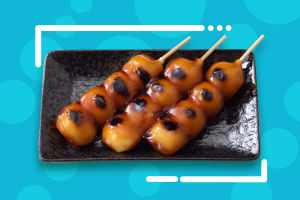The Japanese diet is characterized by its emphasis on "fresh" and "light" food, with an added focus on visual appeal. The Japanese belief is that food is most nutritious during its fresh period, and therefore they prefer raw or minimally processed foods, such as raw vegetables, raw eggs, raw fish, and meat.
To maintain this light and fresh taste, the Japanese typically avoid high-fat foods and opt for cooking methods such as roasting, boiling, or frying with minimal oil.
In addition to lightness, the Japanese also place great importance on the beauty of their food, with many dishes named after natural landscapes and visual arts playing a key role in the presentation of their cuisine. This is evident in the traditional Japanese bento box, where the food is meticulously arranged and often decorated with a dried plum to improve its flavor and aroma.
The presence of dried plum in the bento box has practical as well as sensory benefits. The salt concentration in dried plums, which can be more than 20%, makes them naturally preservative and antibacterial. This helps to keep the white rice from spoiling and also provides a burst of salty and sour flavor that can help to improve the taste of the meal.
Apart from their preservative properties, dried plums are also known to stimulate the appetite. The aroma of the plum, carried by the steam of the rice, creates a pleasing sensory experience that encourages people to eat more. This, combined with its nutritional benefits, makes the dried plum an essential part of the Japanese diet and culture.
In conclusion, the Japanese diet is an intricate combination of health, flavor, and visual appeal, with the dried plum playing a significant role in its unique culinary heritage.
The light and fresh approach to food, coupled with the emphasis on natural ingredients and beautiful presentation, make Japanese cuisine a truly memorable experience for both the palate and the eyes.


